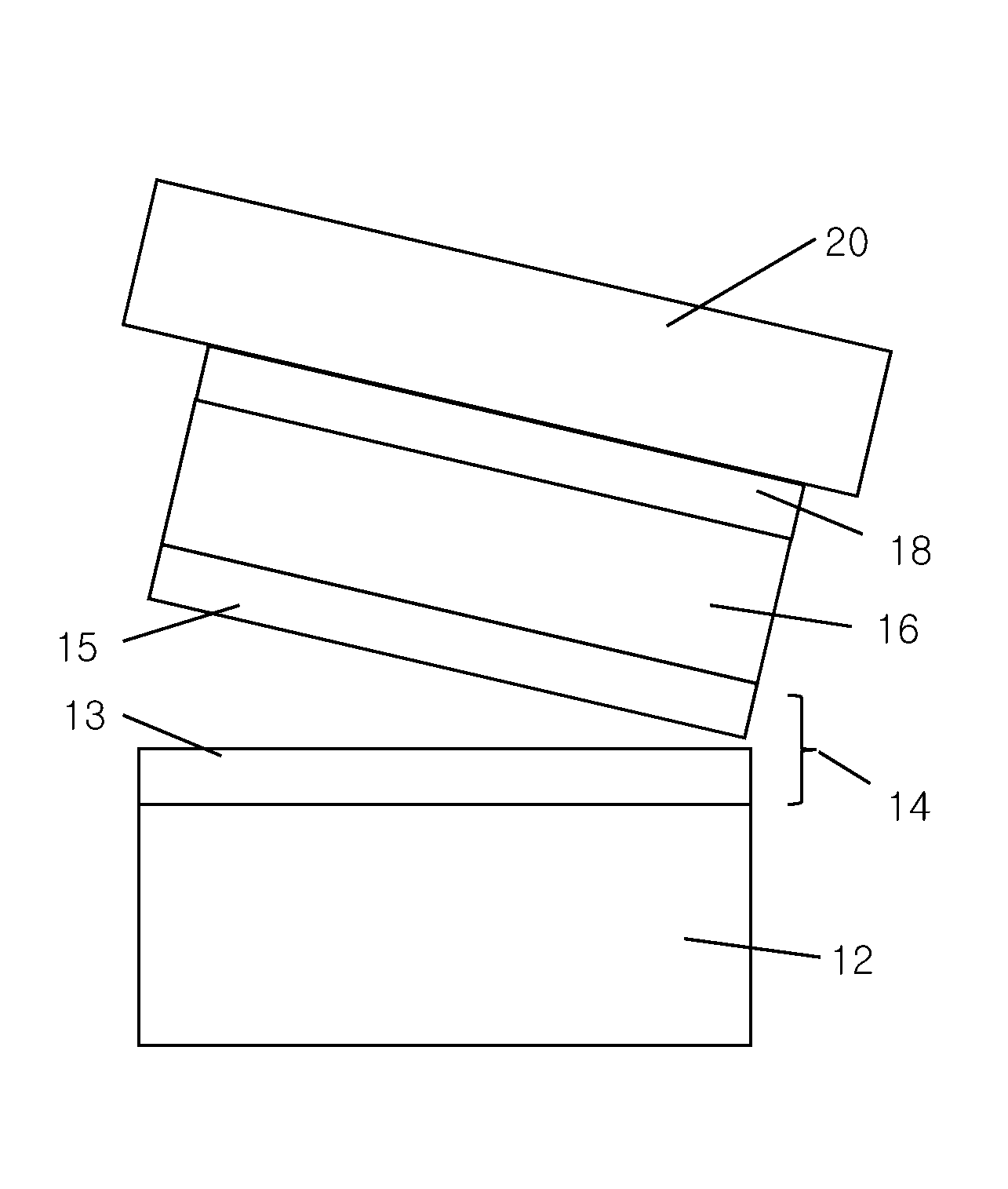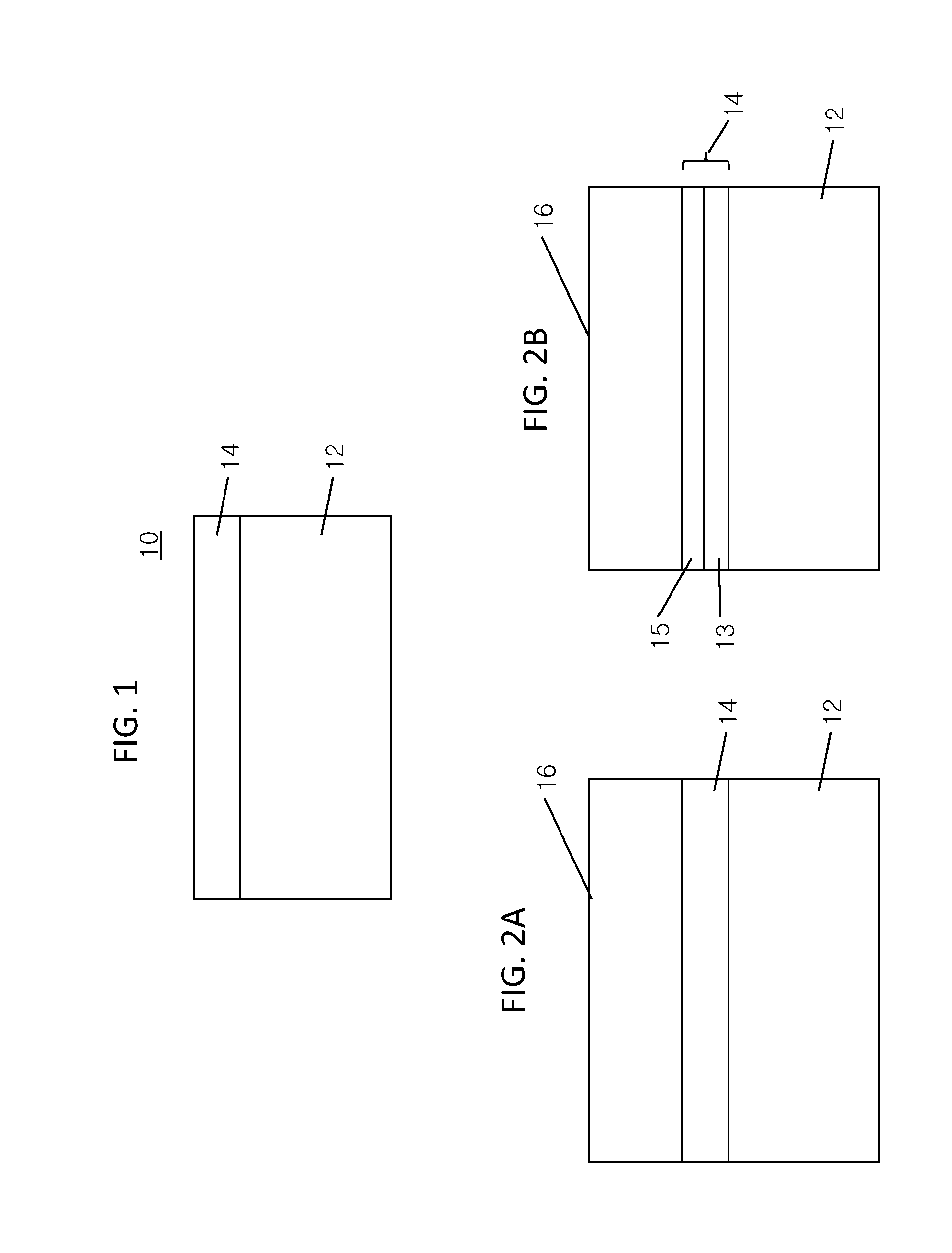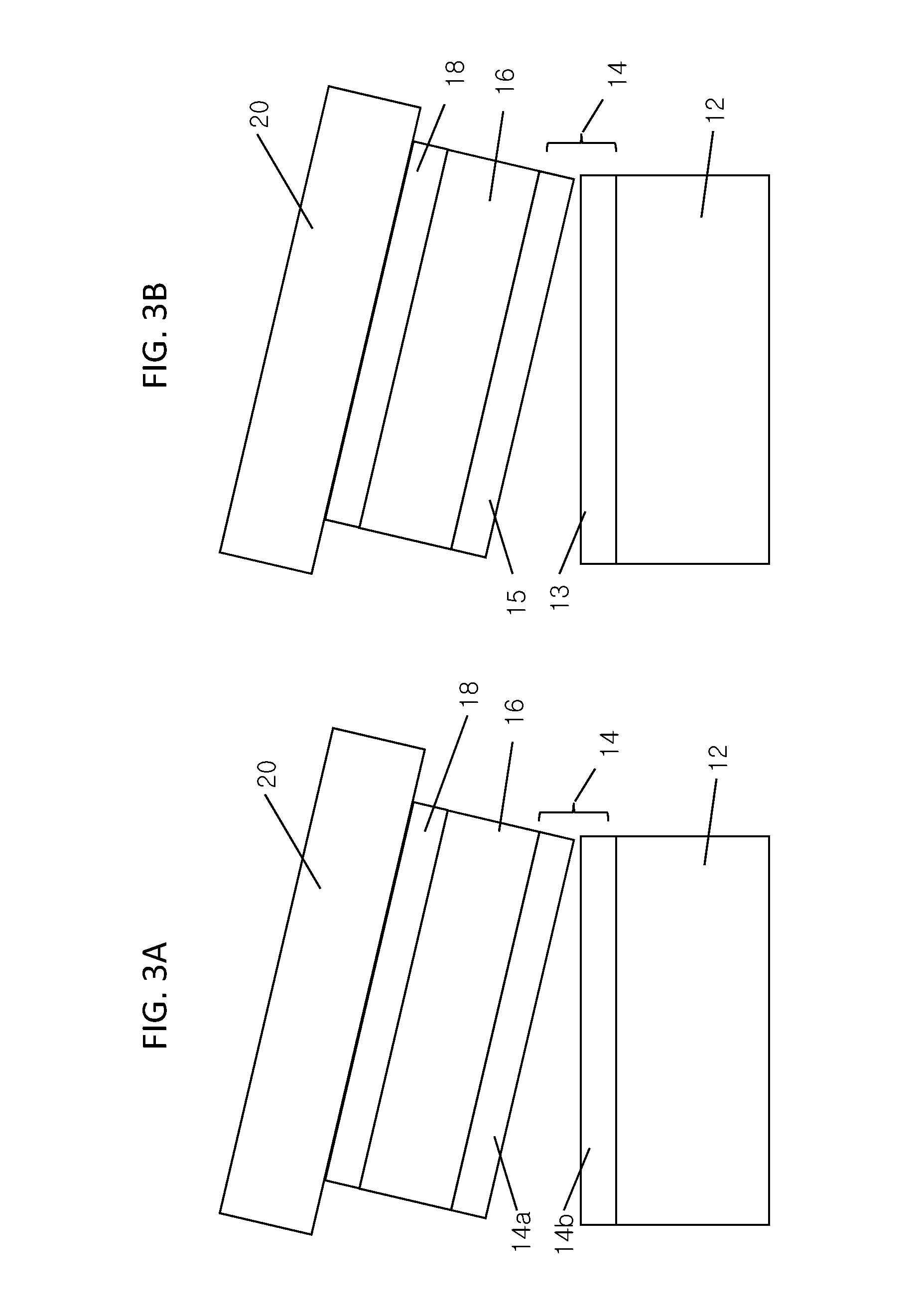Wafer scale epitaxial graphene transfer
a graphene transfer and wave-scale technology, applied in the direction of graphene, solid-state devices, layered products, etc., can solve the problems of difficult control and incorporation into semiconductor processing, difficult processing of graphene, and inability to produce uniform graphene films
- Summary
- Abstract
- Description
- Claims
- Application Information
AI Technical Summary
Benefits of technology
Problems solved by technology
Method used
Image
Examples
Embodiment Construction
[0021]In accordance with the present principles, methods for transferring large sections of two-dimensional (2D) materials are provided. In one embodiment, a 2D material is provided on a substrate having a thickness of one or more monolayers. In one embodiment, the 2D material includes graphene and the substrate may include SiC. A stressor layer is formed on the 2D material and a handle substrate is bonded to the stressor layer. The stressor layer induces stress in at least the closest monolayer. Since the 2D material relies on weak Van der Waals forces to hold the monolayers together, the 2D material may be chemically bonded to the substrate. The stressor layer grips at least the closest monolayer, and lifting the handle substrate results in a high-quality mechanical exfoliation and lift-off of at least the closest monolayer. The top monolayer can be lifted off with little or no damage. The stressor layer may now be employed for further processing, or the exfoliated monolayer of th...
PUM
| Property | Measurement | Unit |
|---|---|---|
| pressures | aaaaa | aaaaa |
| temperature | aaaaa | aaaaa |
| temperature | aaaaa | aaaaa |
Abstract
Description
Claims
Application Information
 Login to View More
Login to View More - R&D
- Intellectual Property
- Life Sciences
- Materials
- Tech Scout
- Unparalleled Data Quality
- Higher Quality Content
- 60% Fewer Hallucinations
Browse by: Latest US Patents, China's latest patents, Technical Efficacy Thesaurus, Application Domain, Technology Topic, Popular Technical Reports.
© 2025 PatSnap. All rights reserved.Legal|Privacy policy|Modern Slavery Act Transparency Statement|Sitemap|About US| Contact US: help@patsnap.com



